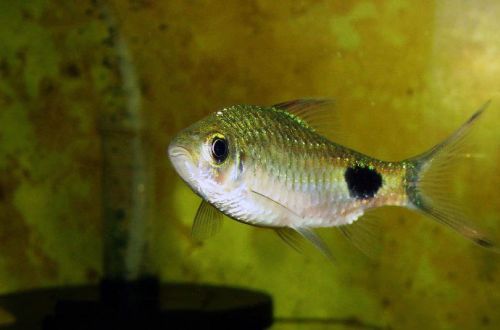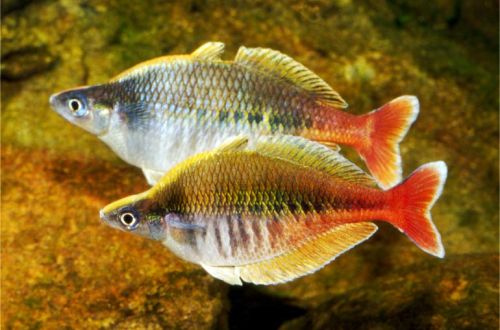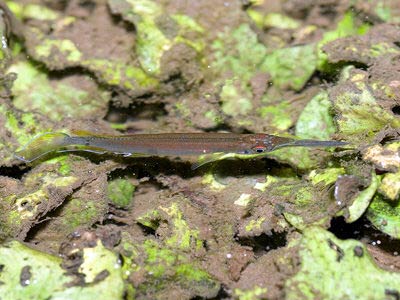
Forest half-snout
Hemiramphodon bluish, Nomoramphus pogonognatus or Forest bluish half-snout, scientific name Hemirhamphodon pogonognathus (synonym Nomorhamphus pogonognathus), belongs to the family Zenarchopteridae (Half-snouts). It has a bizarre appearance. Simple and undemanding, it makes a great addition to the freshwater aquarium community.

Contents
Habitat
It comes from Southeast Asia from the Malay Peninsula in southern Thailand, Malaysia, and Singapore. Inhabits the lower reaches of rivers, swamps and other water bodies with a weak current, located among the tropical forest. Found in river estuaries where fresh and sea water mixes. A typical biotope is a shallow stream, the bottom of which is covered with a layer of silt, fallen leaves, numerous snags from branches and tree roots.
Brief information:
- The volume of the aquarium – from 70 liters.
- Temperature – 22-28°C
- Value pH — 6.0–8.0
- Water hardness – 2–22 dGH
- Substrate type – any
- Lighting – dim and moderate
- Brackish water – acceptable at a concentration of 5 grams per liter of water
- Water movement – light or moderate
- The size of the fish is about 10 cm.
- Food – any floating food rich in protein
- Temperament – conditionally peaceful
- Keeping in a group with one male and 3–4 females
Description
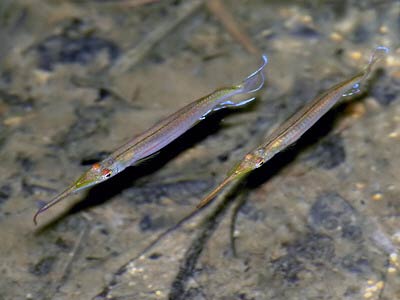
Outwardly, it resembles another closely related species that lives in the same area – Dermogenis. It has a similar strongly elongated slender body and an unusual mouth structure, where the upper jaw is noticeably shorter than the lower one. Distinctive features of the Forest bluish half-snout are the presence of a small “hook” on the lower jaw, a brighter color from gray-green to blue-green and a blue border along the edges of the fins and tail.
Food
The structure of the mouth hints at the feeding habits of this species. The fish feeds in the upper layer of water, capturing insects and other invertebrates from the surface. In a home aquarium, protein-rich floating food should be fed, as well as live or frozen bloodworms, flies, mosquito larvae and similar products.
Maintenance and care, arrangement of the aquarium
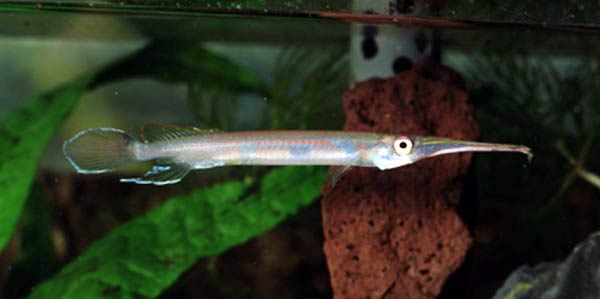
The optimal size of the aquarium for a group of 3-4 fish starts from 70-80 liters. When keeping, it is important to provide open spaces for swimming in the upper water layer, combined with hiding places in the form of clusters of plants. The design of the lower tier of the aquarium does not matter and is selected at the discretion of the aquarist or based on the needs of other fish. Lighting should be subdued. They can jump out of the water, so a lid is a must.
Adapted to life in brackish environments. It is acceptable to add sea salt at a concentration of about 5 grams per liter of water.
Behavior and Compatibility
Males compete with each other for territory and the attention of females. In a small aquarium, it is recommended to keep this male with several females. Peacefully tuned in relation to other species. Good neighbors will be fish of comparable size and temperament, living in the water column or near the bottom.
Breeding / breeding
Semi-snouts are characterized by intrauterine development. The gestation period lasts about 8 weeks. The fry appear fully developed. Spawning is extended in time, only 1–5 fry are born daily. Parental instincts are not developed, but at the same time, Nomoramphus pogonognatus does not have a tendency to eat its offspring. However, it is advisable to place the juveniles in a separate aquarium. From the first days of life, they can take small food, such as brine shrimp, daphnia, dry granules, flakes, etc.
Fish diseases
In favorable conditions of the disease, cases of the disease are rare. For fish, the risk of getting sick increases in a neglected aquarium with unsuitable water composition, with malnutrition, when low-quality food is served, and in contact with other sick fish. Read more about symptoms and treatments in the Aquarium Fish Diseases section.




